On May 28, 2025, an art therapy session titled “Transformation of Thoughts in the Context of War” was held for students who are internally displaced persons.
The facilitators and moderators of the event were lecturers from the Department of Psychology and Pedagogy: Candidate of Pedagogical Sciences, Associate Professor, and Acting Head of the Department Lesia Klevaka; Candidate of Psychological Sciences, Associate Professor Viktoriia Shevchuk; and Candidate of Pedagogical Sciences, Associate Professor Maryna Teslenko.
The aim of the event was to help participants become aware of, accept, and process anxious thoughts caused by the war, as well as to find internal resources for further personal development and adaptation to new living conditions.
The session began with a practice of associative expression of thoughts on paper: participants depicted what they associated with the beginning of the war, stages of change, loss, hope, support, and ultimately, victory and peace. Each drawing became a kind of emotional map of their lived experience.
Next, the participants engaged in the technique “Palms of Peace.” On hand outlines traced on paper, they illustrated symbols of strength, joy, support, calm, family, and life – everything that represents true life values and sources of resilience in difficult times. Color in this practice served as an emotional guide, helping to express mood, dreams, and inner states.
This technique focuses on resourcefulness and positive reinforcement. Participants visualize and depict on their palms the symbols of their personal values (strength, joy, peace, family, life). This helps shift attention away from traumatic experiences and toward internal anchors and sources of stability. Tracing the hand outline and working with it engages bodily sensations, contributing to grounding and the return of bodily awareness, which is often lost during traumatic stress. The use of colors to express mood, dreams, and internal states allows for the release of emotions that may be repressed or blocked, as the psychology of color plays an important role in uncovering unconscious experiences and needs. The resulting drawing of the hand becomes a kind of “anchor” or reminder of one’s inner resources and values that can be turned to in times of stress.
During the final reflection, participants shared that they felt emotional relief, inner stability, and a sense of safety after the exercises. They noted that the atmosphere of trust, support, and acceptance helped them delve deeper into their own experiences and transform anxious thoughts into constructive and resource-rich images.
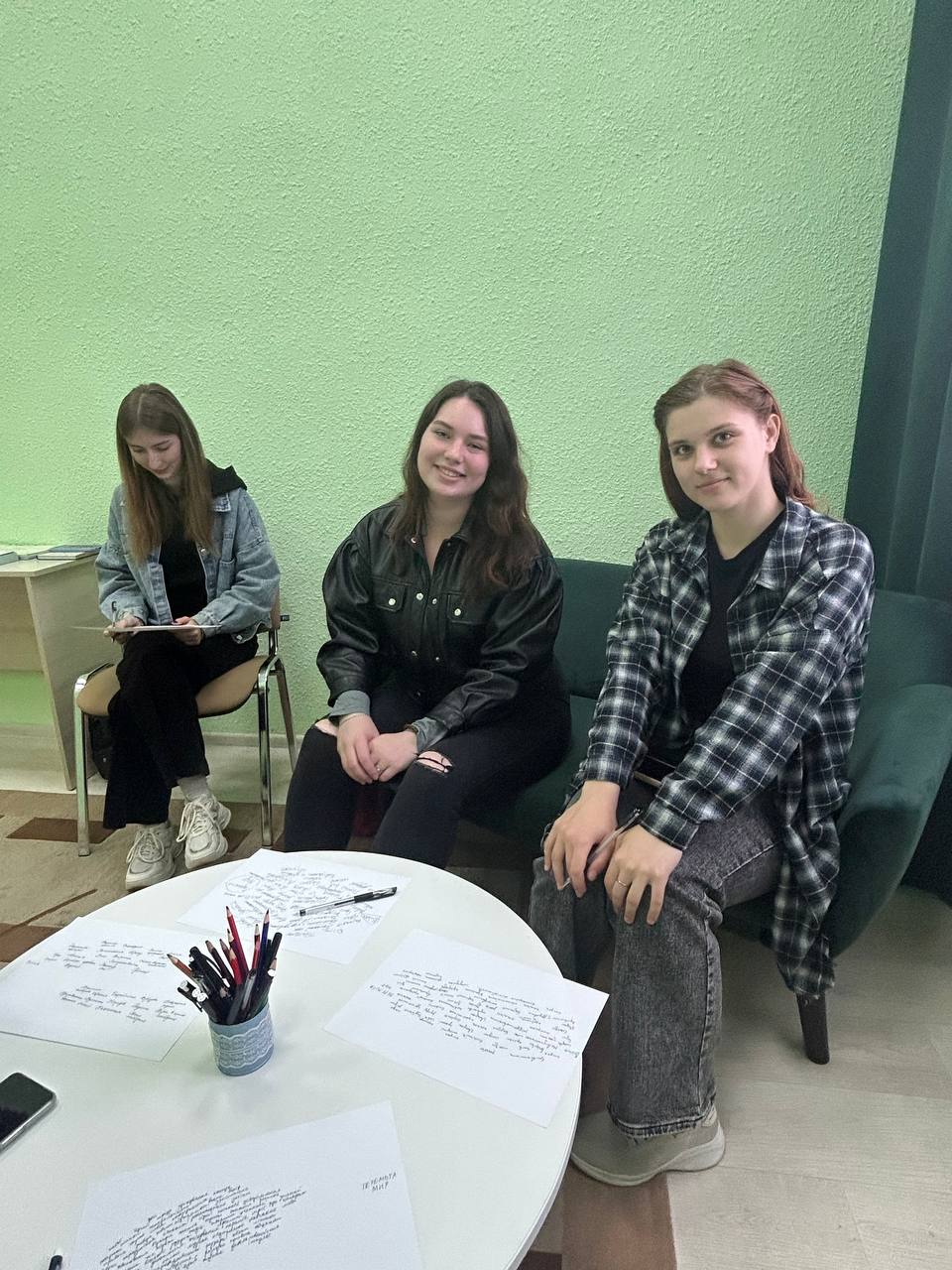
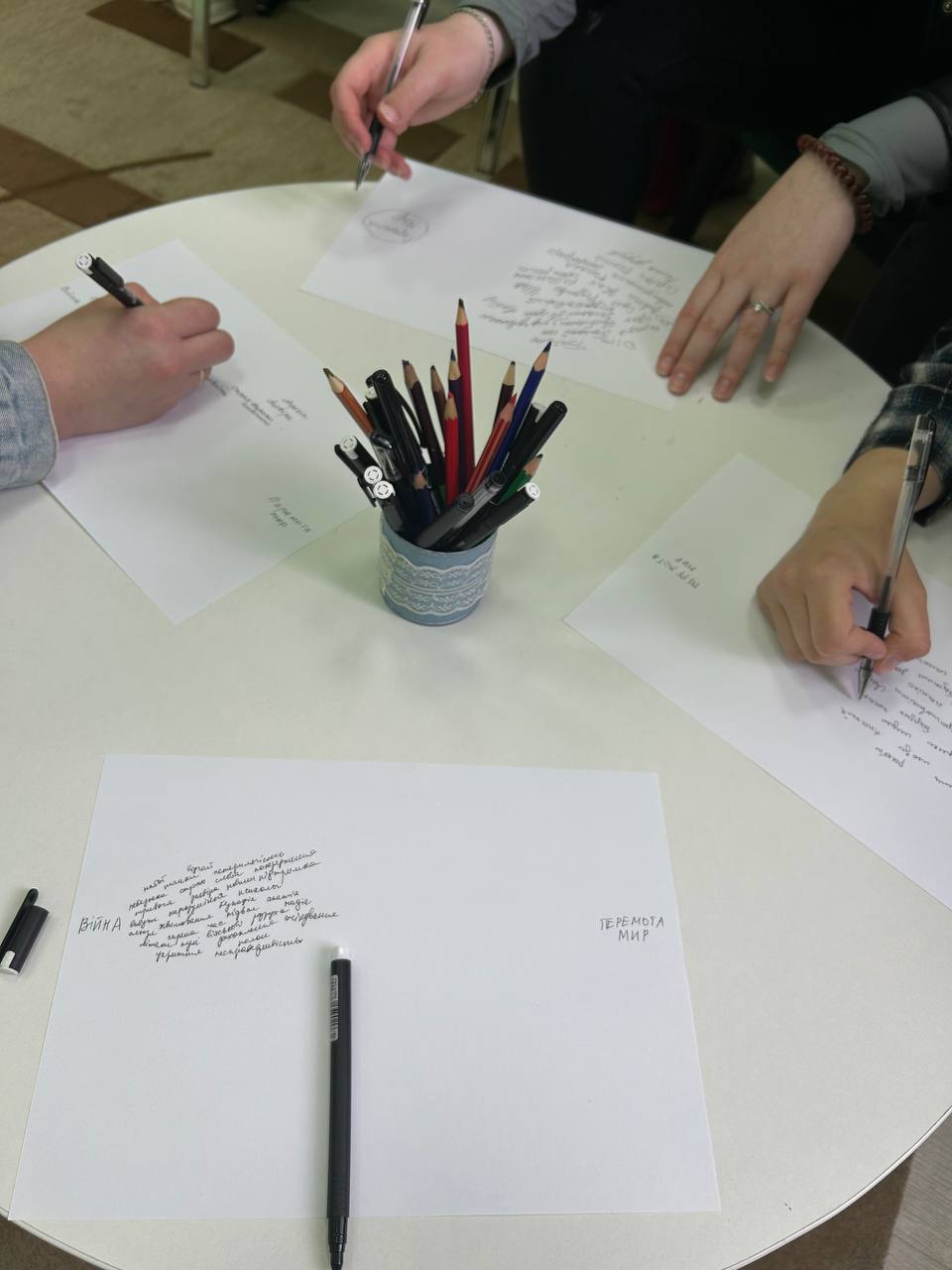
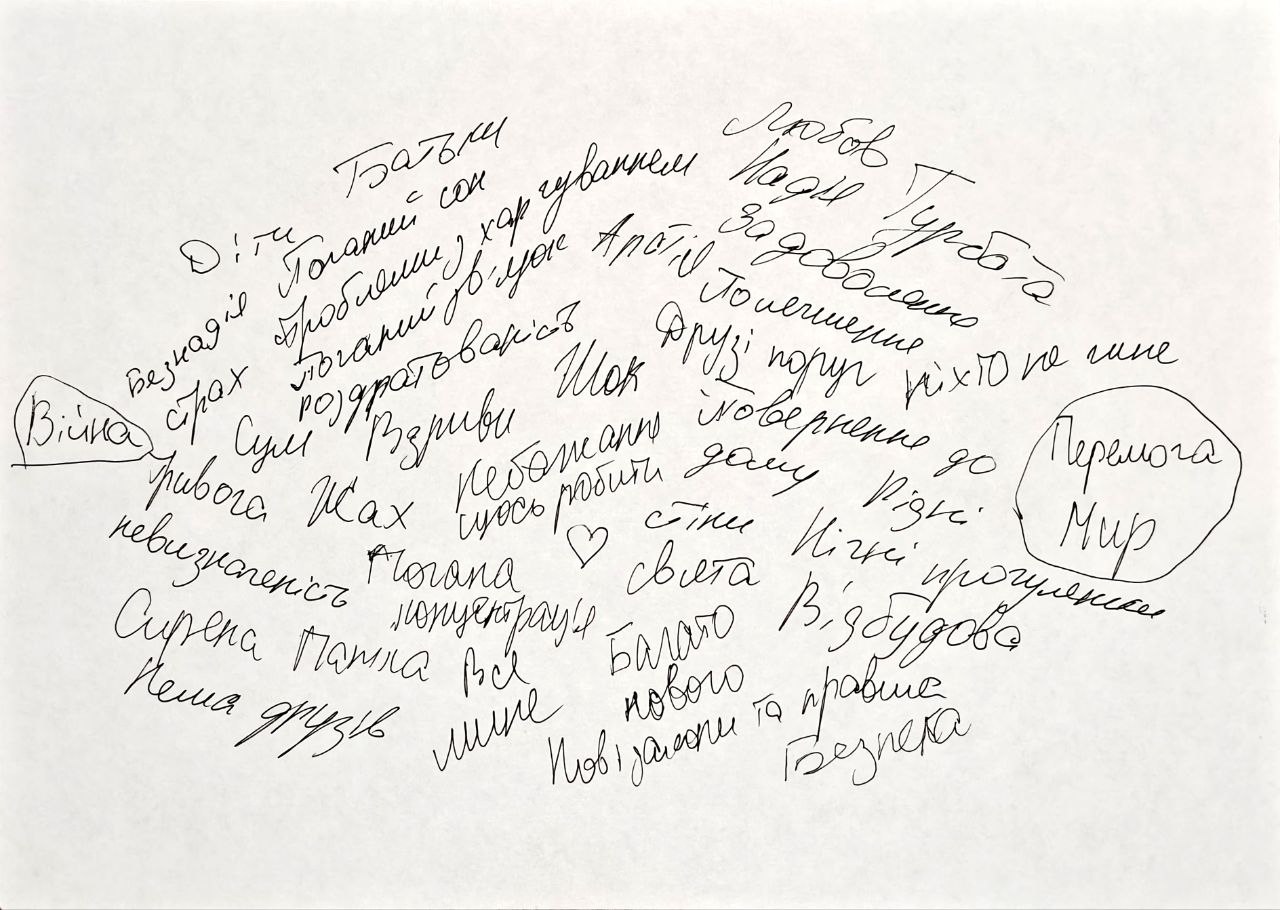

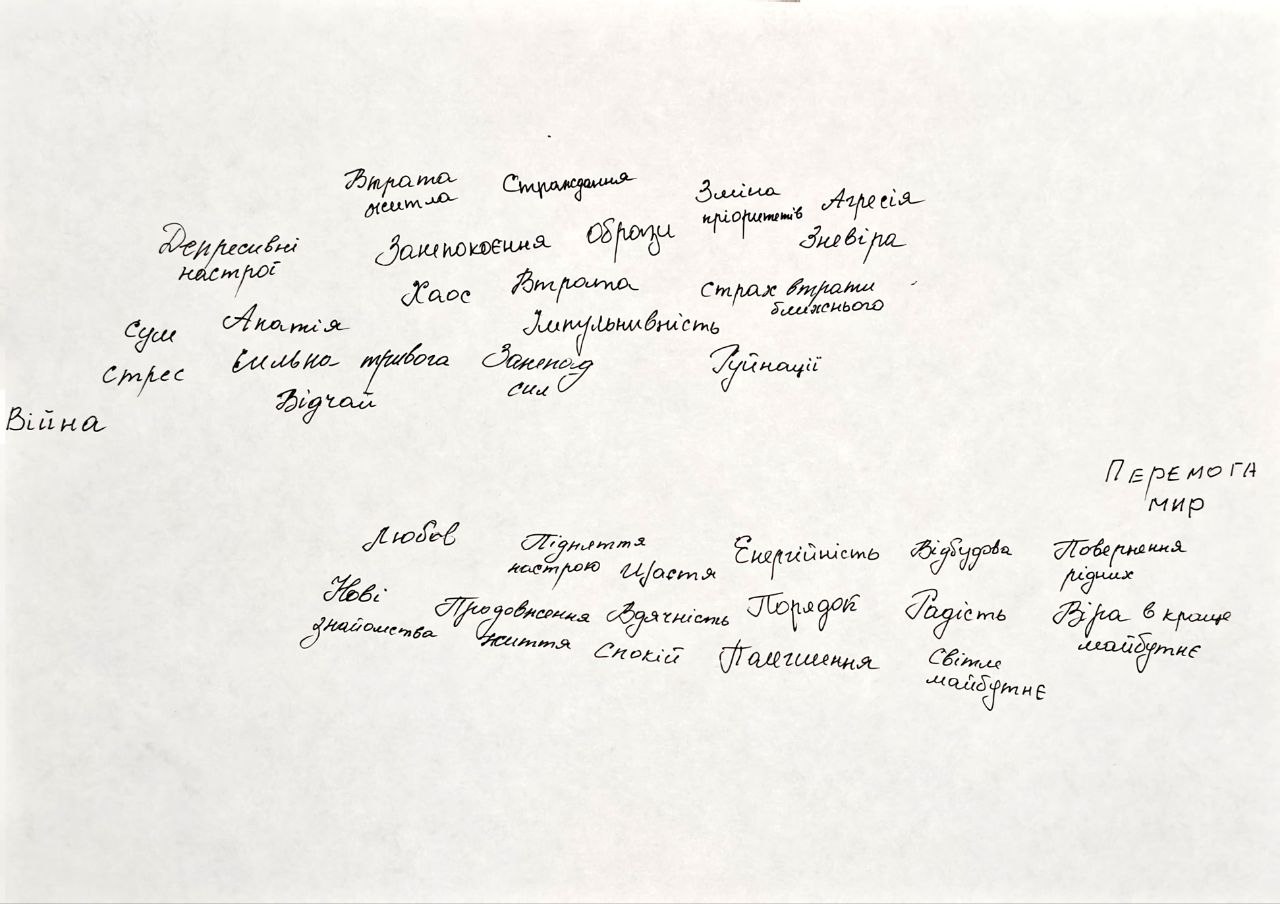
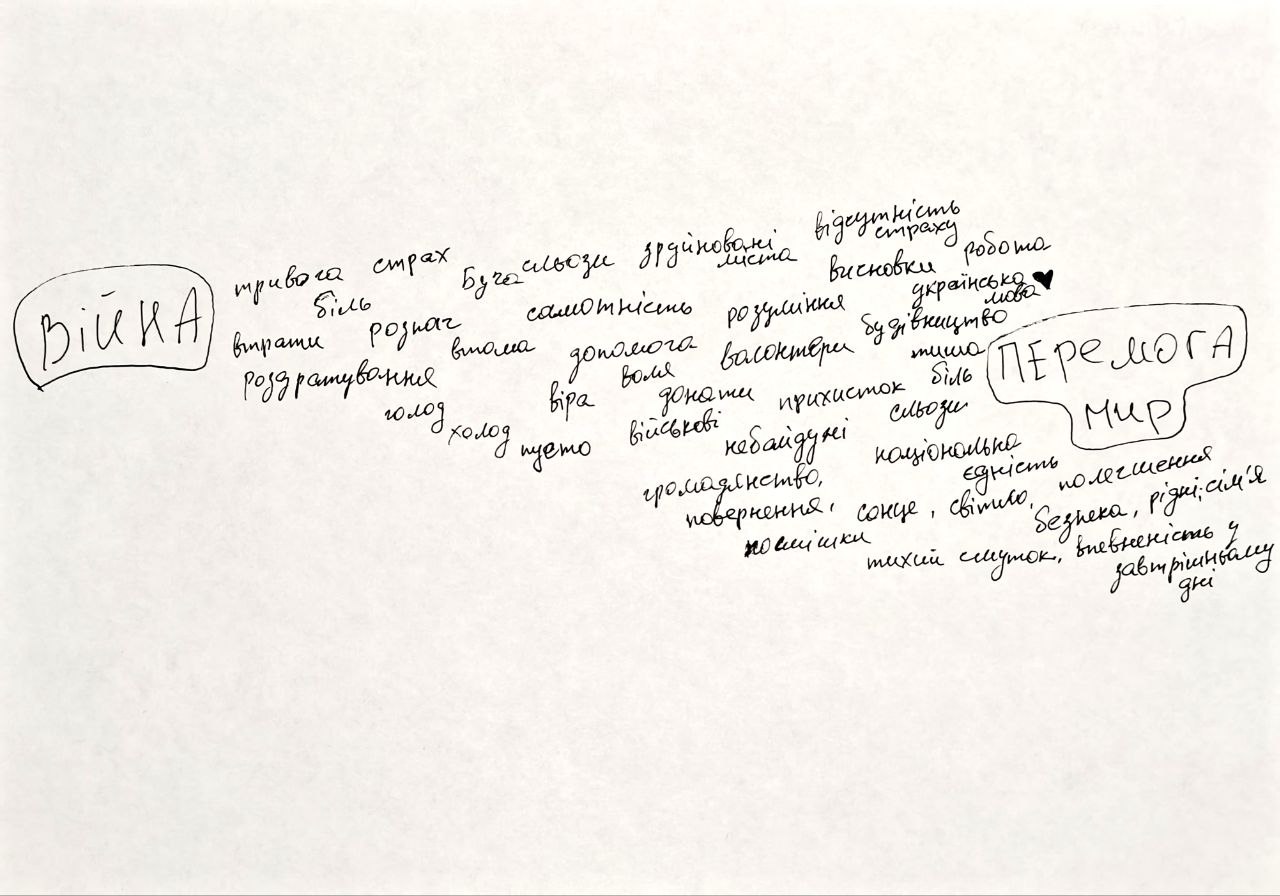

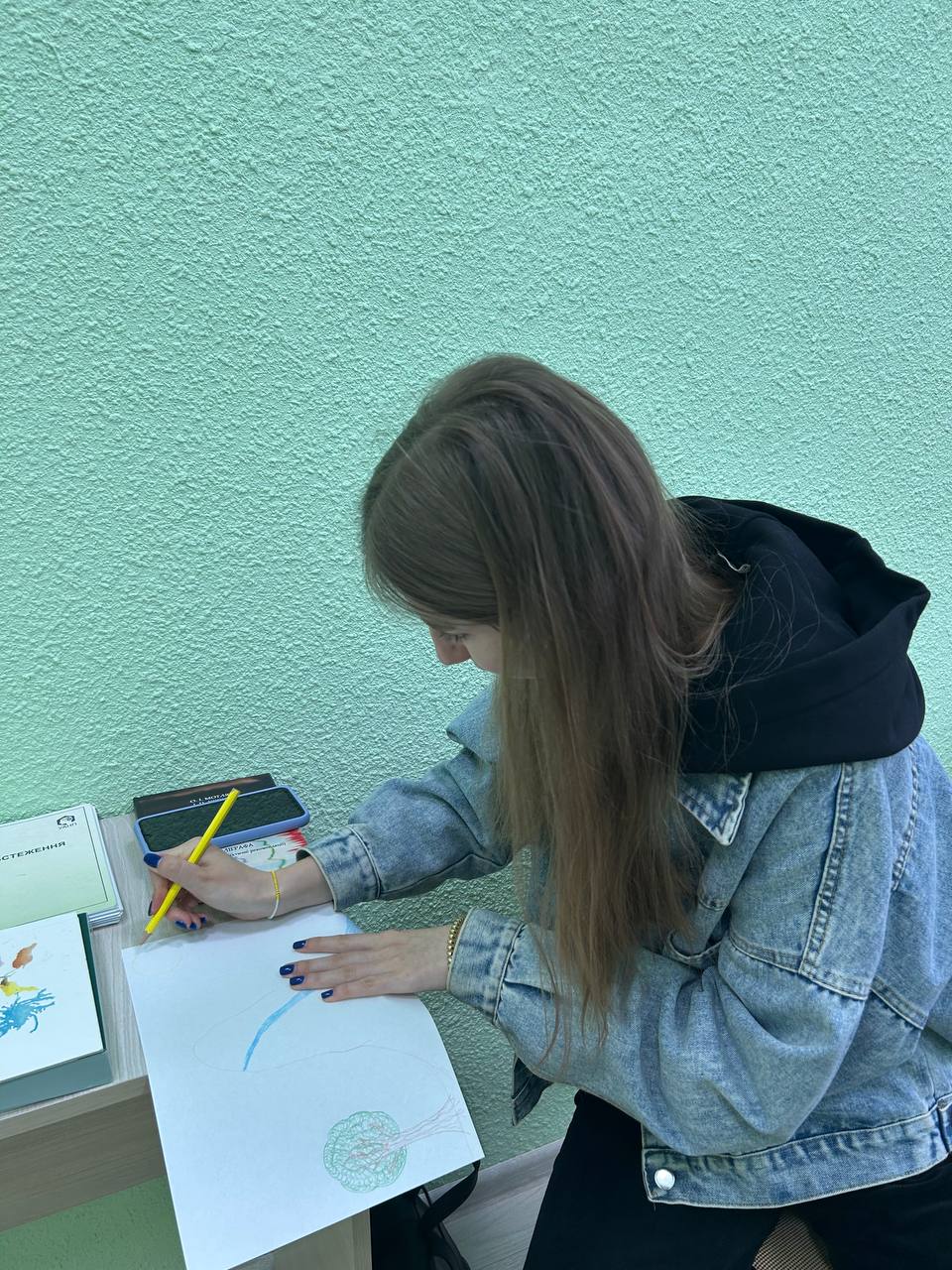
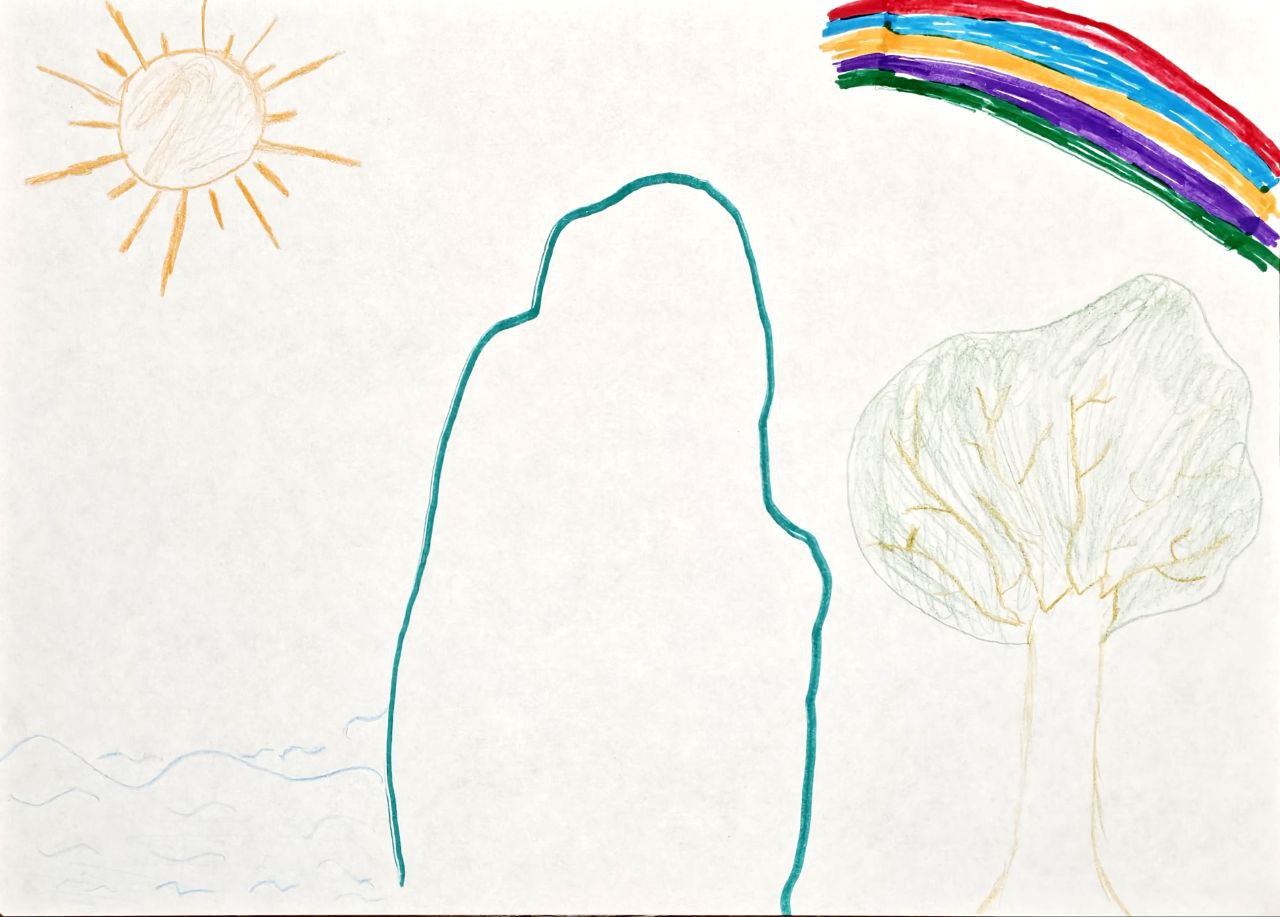
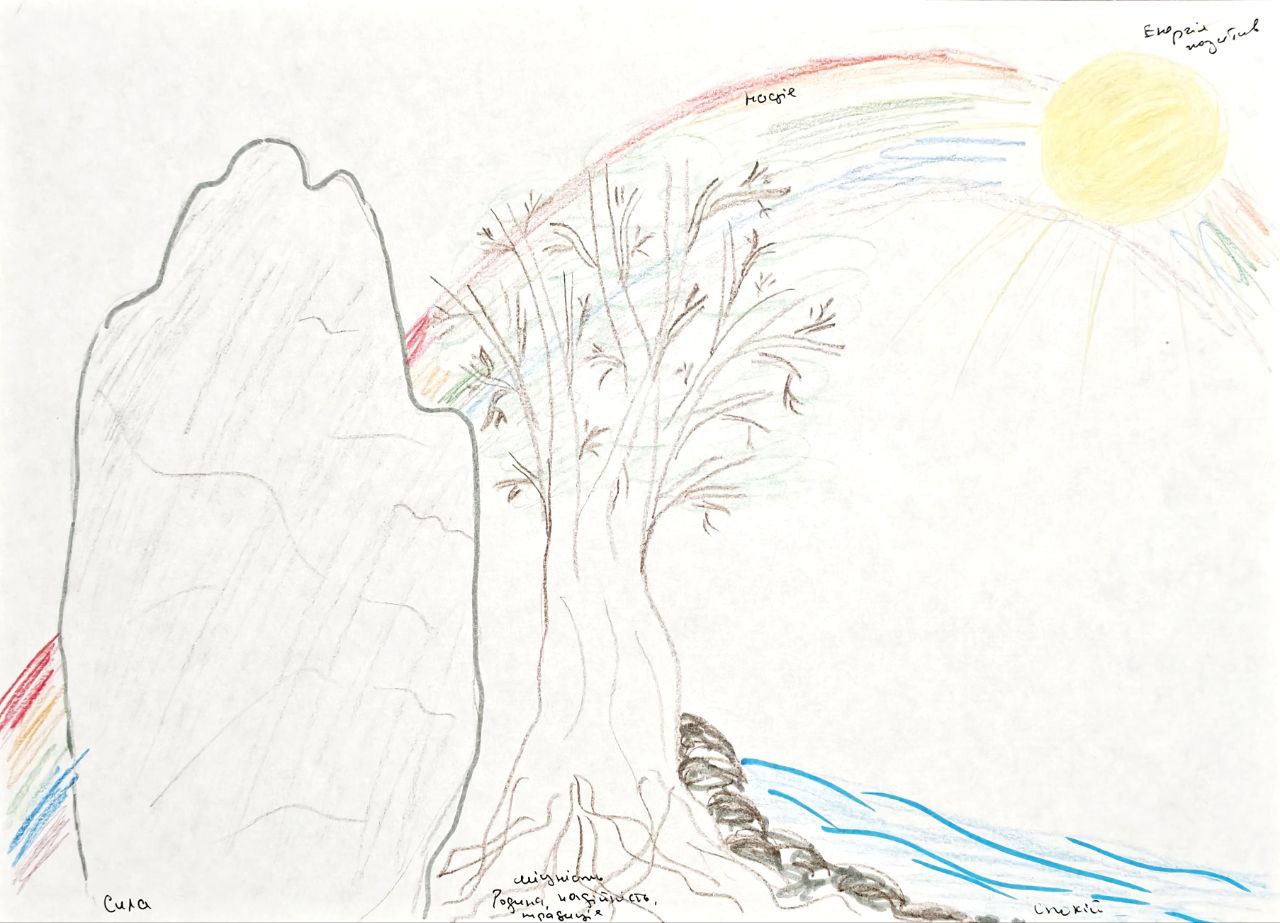
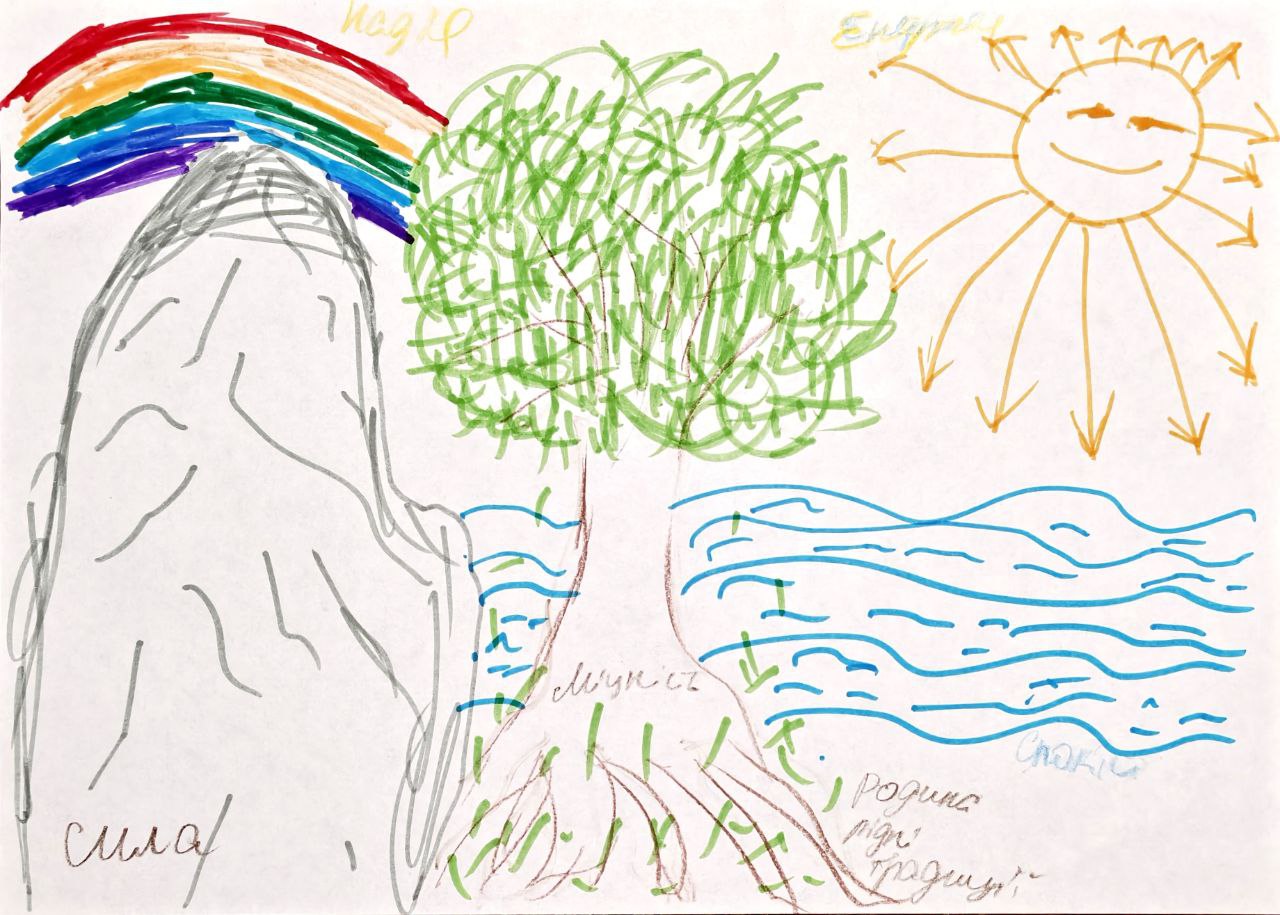
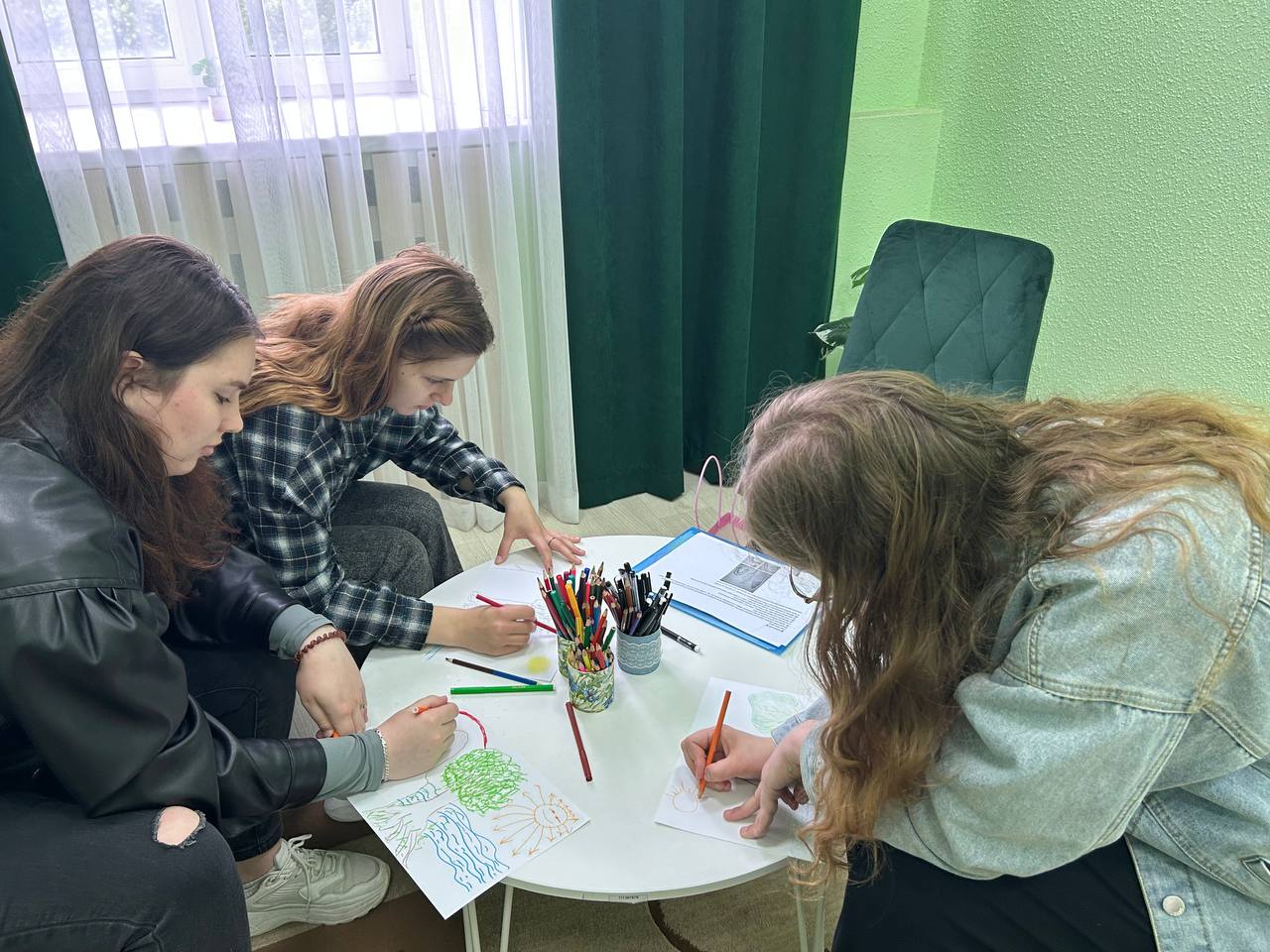
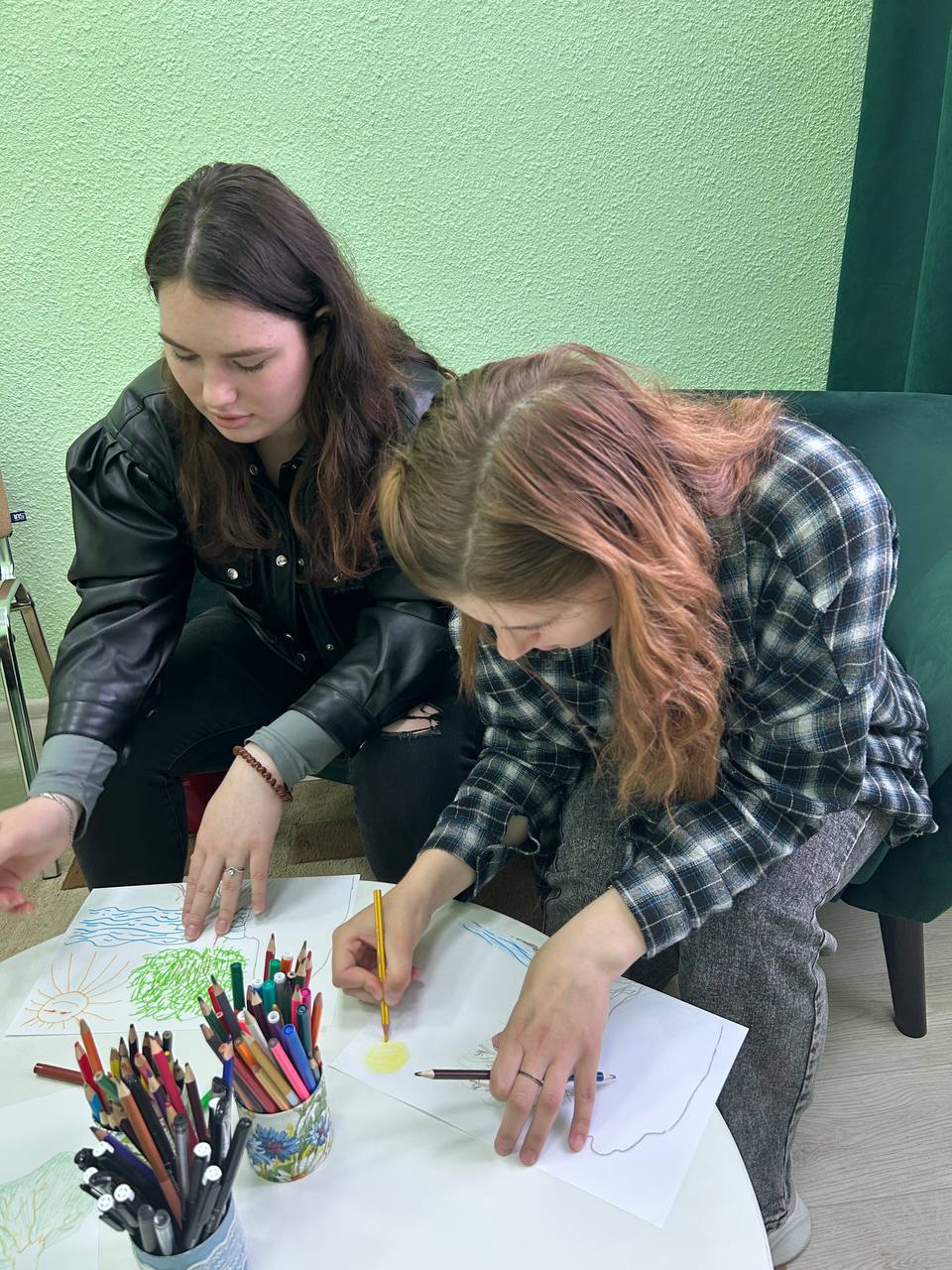
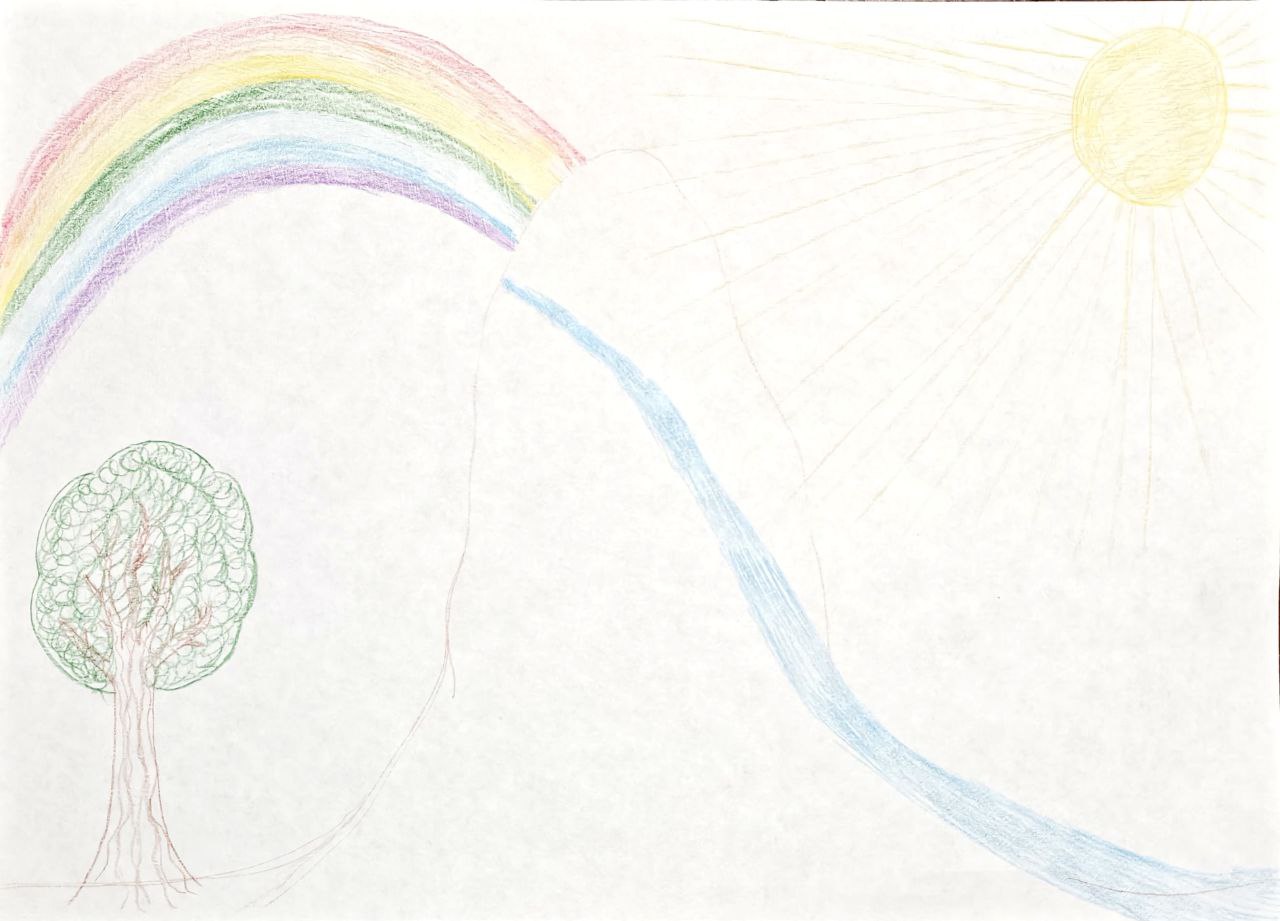
The reflection phase is no less important than the exercises themselves, as the opportunity to share one’s feelings after the practices promotes catharsis — the release of accumulated emotions, which leads to a sense of relief. The atmosphere of trust, support, and acceptance created within the group is critically important for individuals who have experienced trauma. It helps reduce the sense of isolation, normalize personal experiences (to understand “I am not alone”), and strengthen the feeling of safety. It is worth noting that group reflection helps participants not only express anxious thoughts but also transform them into constructive and resourceful images. This occurs through interaction, receiving feedback, and gaining new insights that emerge during the discussion of their work.
Art therapy during wartime proves its effectiveness as a means of gentle psychological support that contributes to restoring internal balance and forming a sense of control over one’s life. It allows individuals to work through trauma indirectly, through creativity, avoiding direct retraumatization. By restoring inner balance, it helps form a sense of control over one’s life, which is vitally important in the uncontrolled environment of war. This approach enhances the adaptive mechanisms of the psyche, helping people not only survive but also find ways for further personal development.
The event was organised by the academic staff of the Department of Psychology and Pedagogy as part of the Erasmus+ KA220-ADU TRUST project: Trauma of refugees in Europe: An approach through art therapy as a solidarity program for Ukraine war victims (Grant Agreement No. 2024-BE01-KA220-ADU-000257527).
The project title is decoded as follows:
TRUST
T – Trauma
R – Refugees
U – Ukraine
S – Solidarity
T – Therapy
The project is co-funded by the EU and led by the Centre Neuro Psychiatrique St-Martin from Belgium, in partnership with the National University «Yuri Kondratyuk Poltava Polytechnic» (Ukraine), Greek Carers Network EPIONI (Greece), Fondazione Don Luigi Di Liegro (Italy), Lekama Foundation (Luxembourg), EuroPlural Project (Portugal).
It is worth reminding that three art therapy sessions were recently held at Poltava Polytechnic as part of the TRUST project. During the first session, internally displaced participants completed two key art therapy exercises (“Draw Your Personal Coat of Arms” and “Tree of Meanings”). During the second, they responded to the question “What does mental health mean to me?” In the third session, participants worked on expressing feelings, reducing inner tension, and searching for personal resources. A separate art therapy event titled “Harmonizing the Psycho-Emotional State” was conducted at the structural subdivision of Poltava Polytechnic – the Poltava Professional College of Oil and Gas.
Media Center of
National University “Yuri Kondratyuk Poltava Polytechnic”



